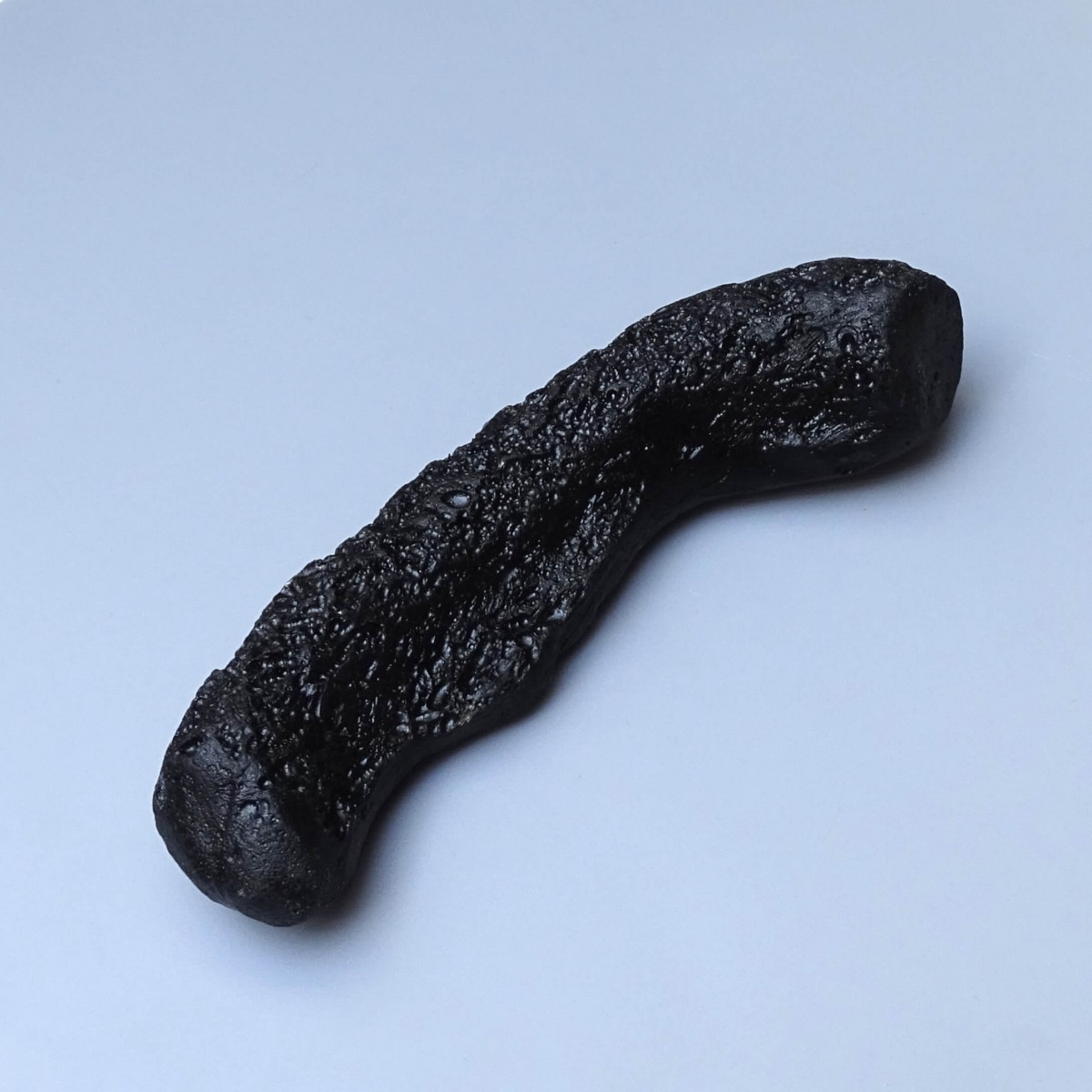

|
COOKIES SETTINGS |
Přijmout všechny cookies Personalizovat |
| Přijmout zvolené cookies |





Indochinese tektite - a beautiful large piece, a collector's item for your collection. This is a unique exhibition museum piece. Tektites are also the subject of collecting interest and scientific research, particularly in geology and planetology, as they provide information about impact events and Earth's history.
Weight: 155 g
Dimension: 13.57 x 3.41 x 2.31 cm
Country of origin: Vietnam, Tuyen Quang province
You always buy the mineral shown in the photo with us!
The Vietnamese tektites are part of the indochinite-strewn field in Southeast Asia. These tektites are mostly black in appearance and were formed during a cataclysmic meteorite impact approximately 700,000 years ago. These tektites were ejected from the Earth's surface by a massive meteorite impact that created a mushroom cloud so huge it probably reached the upper atmosphere. The "stem" of the mushroom cloud formed a massive superheated convective column, which both baked the ejecta (tektites) and sent them on ballistic trajectories allowing distribution of material up to 11,000 km away. These vitreous astronauts are considered to be the least watery material on the planet because every bit of volatile matter (water) evaporated from them when they were formed. After being pressure-melted by the massive impact, it was then superheated after being fired into the convective column and then ejected into freezing space at suborbital altitudes. It then further tempered during reentry before losing its ejection velocity and falling to the ground at terminal velocity to form the distinctive glass structures found in regions of Southeast Asia today. Indochinites appear to be black, but are actually very dark green, contrasting with the vivid woods and olive green of the European Moldavite tektites.

Indochinese tektite - a beautiful large piece, a collector's item for your collection. This is a unique exhibition museum piece. Tektites are also the subject of collecting interest and scientific research, particularly in geology and planetology, as they provide information about impact events and Earth's history.
Weight: 155 g
Dimension: 13.57 x 3.41 x 2.31 cm
Country of origin: Vietnam, Tuyen Quang province
You always buy the mineral shown in the photo with us!